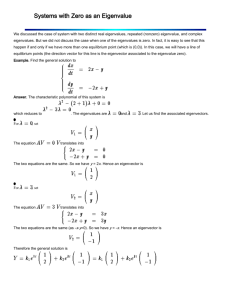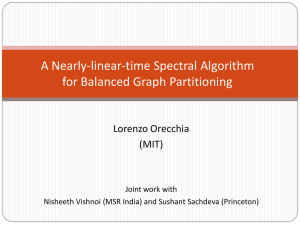2E2 Tutorial Sheet 11 Second Term, Solutions 16 January 2004
advertisement
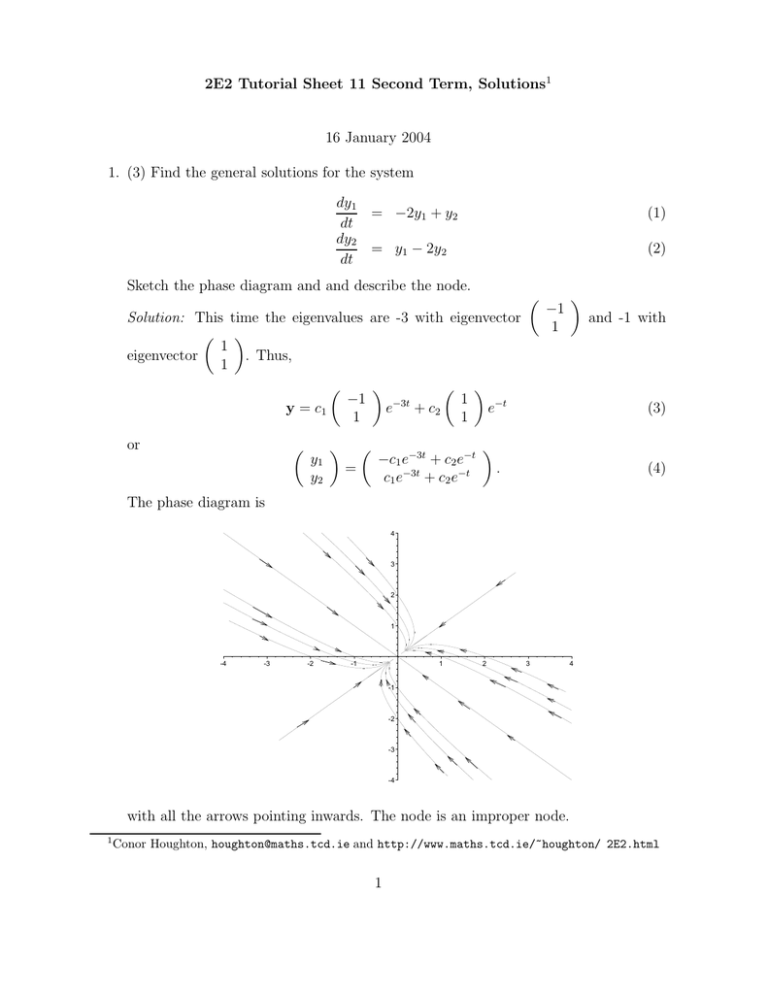
2E2 Tutorial Sheet 11 Second Term, Solutions1 16 January 2004 1. (3) Find the general solutions for the system dy1 = −2y1 + y2 dt dy2 = y1 − 2y2 dt (1) (2) Sketch the phase diagram and and describe the node. Solution: This time the eigenvalues are -3 with eigenvector 1 . Thus, eigenvector 1 −1 1 −3t y = c1 e + c2 e−t 1 1 or y1 y2 = −c1 e−3t + c2 e−t c1 e−3t + c2 e−t −1 1 and -1 with (3) . (4) The phase diagram is 4 3 2 1 -4 -3 -2 -1 1 2 3 4 -1 -2 -3 -4 with all the arrows pointing inwards. The node is an improper node. 1 Conor Houghton, houghton@maths.tcd.ie and http://www.maths.tcd.ie/~houghton/ 2E2.html 1 2. (3) Find the solution of dy1 = −9y2 dt dy2 = y1 dt (5) (6) by considering y1 (0) = r and y2 (0) = 0, draw the phase diagram. Solution: Working out the eigenvalues −λ −9 1 −λ = λ2 + 9 = 0 (7) we find λ = ±3i and the 3i eigenvector is a a 0 −9 = 3i b b 1 0 (8) so a = 3ib and the eigenvector is, for example, 3i x= 1 (9) The other eigenvector is the complex conjugate of this one and so the general solution is 3i −3i 3it y = c1 e + c2 e−3it . (10) 1 1 Now, if we assume that y1 (0) = r and y2 (0) = 0 we find c1 = −c2 = −ir/6. Putting this back in and using the sine and cosine formulas we get r cos 3t y= (11) r sin 3t 3 so we have the eillipse y12 + (3y2 )2 = r (12) with phase diagram 1 0.8 0.6 0.4 0.2 -3 -2 -1 -0.2 -0.4 -0.6 -0.8 -1 2 1 2 3 3. (3) Find the solution of dy1 = −y1 − 2y2 dt dy2 = 2y1 − y2 dt (13) (14) for initial conditions y1 (0) = r and y2 (0) = 0 write this in real form. Solution: This time the matrix is A= −1 −2 2 −1 and so the spectrum is complex, λ1 = −1 + 2i with eigenvector i x1 = 1 and λ2 = −1 − 2i with eigenvector x2 = −i 1 The solution is then y1 i −i (−1+2i)t y= = c1 e + c2 e(−1−2i)t . y2 1 1 Now, this means r 0 = y(0) = c1 i 1 + c2 −i 1 . and hence c1 = −ir/2 and c2 = ir/2. Now using exp (a + ib) = exp a exp ib we have solution r 1 1 2it −2it e + e e−t . y= −i i 2 and so r 1 1 (cos 2t + i sin 2t) + (cos 2t − i sin 2t) e−t y = −i i 2 r cos 2t e−t = r sin 2t 3
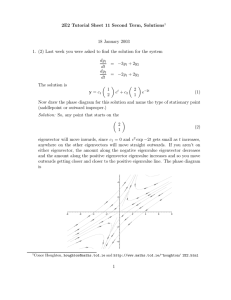
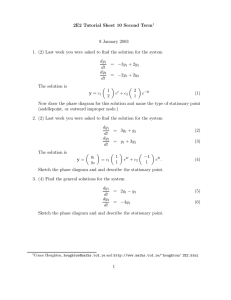
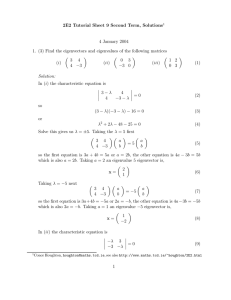




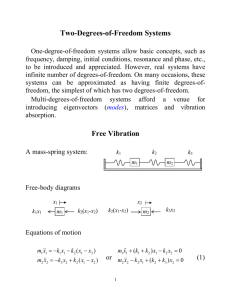
![MA1S12 (Timoney) Tutorial sheet 8a [March 19–24, 2014] Name: Solution](http://s2.studylib.net/store/data/011008032_1-b2fb2d48f663eaa5a5f0eab978a3a136-300x300.png)
![MA1S12 (Timoney) Tutorial sheet 8b [March 19–24, 2014] Name: Solutions](http://s2.studylib.net/store/data/011008033_1-88cea25627107930633c3f2e63111954-300x300.png)
